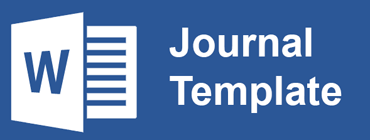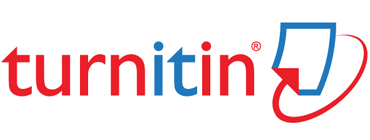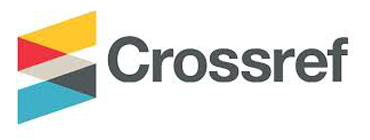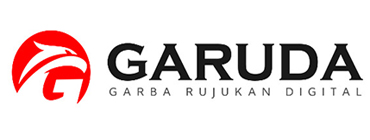THE EFFECT OF APPLYING OUTDOOR ACTIVITY ON THE STUDENT’S WRITING ABILITY IN DESCRIPTIVE TEXT AT SMP IT SUARA DA’I MUDA LANGKAT
Abstract
The study was intended to understand the effect of the Outdoor Activity approach on the writing capacity of the students observed and evaluated by seven-grade students at SMP IT Suara Da'I Muda Langkat. Experimental study design was the approach used. The population in this study was seven grade of the Students of SMP IT SuaraDa'I Muda Langkat. The researcher took all of the population of the seven grades, there are two classes and divided them as experimental and control class while taking the sample of this study. In the experiment, there were 25 students and 25 students in control class. The researcher taught in the experimental class using the Outdoor Activity technique and thye control class taught using the Lecturing approach. The investigator used pre-test, treatment, and post-test. The experimental class increased from 56,40 to 75,80 by 19,4 points, while the control class increased from 49,60 to 65,60 by 16 points. The researchers found that the value of Sig was determined by using SPSS V22 in the post-test of the experiment and control class.It was 0,000 in the T-Test (2tailed). It was lower than 0,05 (0,000<,0.05), so there was a substantial distinction between the class of the experiment and the class of the monitor. In other words, by using the Outdoor Activity approach, the achievement of the students in writing is more successful than the method of lecturing.
Full Text:
PDFReferences
Ali, AY, (2006). The Holy Qur'an: text, translation, commentary & notes in English translation. Fresh Delhi (India): Bhavan Kitab.
Adelia Vera, (2012) Jogjakarta: DIVA Press. MetodeMengajar Anak di Luarkelas (outdoor activity).
Brown, H Douglas, (2004) Language Assessment; Classroom Practice and Principles, New York: Longman.
Chris Juzwiak,(2009) Stepping Stones A Guide Approach To Writing Sentence And Paragraphs, New York: Bedford/St.Martin’s.
D Jooly, (1984). Writing Task, New York: Cambridge University.
Dewi Utami, (2013). How to Write. Medan: La- Tansa Press.
Direct Science, (2007).“Genre Pedagogy; Language, Literacy and L2 Writing Instruction Journal of Second Language Writing”.
Dirgeyasa, (2014).Collage Academic Writing: A Genre-Based Perspective. Medan: Unimed Press.
Garth. A. (2008). Analysis Data Using SPSS (A Practical Guide for those Unfortunate Enough to Have to Actually Do It). Sheffield: Sheffield Hallam University
Jeremy, Harmer. (2004). How to Teach Writing. England: Pearson Education.
Meyers, Alan.(2005). Gateway to Academic Writing: Effective Sentences, Paragraph and Essay, New York: Longman.
Miskimmin, P,(2005). Outdoor Activities Guidelines for Leader. NewZealand: Garth Gulley.
Pardiyono, (2006). Writing Clues for Better Writing Competence. Yogyakarta.
Pardiyono. (2007). Teaching Genre Based Writing. Yogyakarta: CV Andy Offset.
SaggamSiahaan dan KisnoShnoda. (2008). Generic Structure Text Structure, Yogyakarta: GrahaIlmu.
Smith, B. P, “Instructional Strategies in Family and ConsumerSciences: Implementing the Contextual Teaching and LearningPedagogical Model”,Journal of Family & Consumer Sciences Education. Vol. 28, No. 1 Soepomo, Bambang, (1997).
Statistik Terapan, Jakarta: PT. RinekaCipta.
Sudjana, (2015).MetodaStatistika, Bandung: Tarsito.
Sudijono, Anas, (2012).
Pengantar Evaluasi Pendidikan (Jakarta: PT. Raja GrafindoPersada. Sugiyono, (2007).
Metode Penelitian Pendidikan Kuantitatif, Kualitatif, dan R&D Bandung: Alfabeta
Sugiyono, (2013).MetodePenelitian Pendidikan. Bandung. Alphabeta Grafindo.
Syafaruddin, et.Al,(2013). Panduan Penulisan Skripsi. FakultasilmuTarbiyah dan Keguruan IAIN, Medan.
Syahrum, Salim, (2016). Metodologi Penelitian Kuantitatif. Bandung: Citapustaka Media.
Syaukani, (2018). Metodologi penelitian pendidikan, Medan: Perdana Publishing.
Suyanto, K. K. E, (2010).English for Young Learners: MelejitkanPotensi Anak melalui English Class yang Fun, Asyik, dan Menarik. Jakarta: PT. Bumi Aksara.
Refbacks
- There are currently no refbacks.

This work is licensed under a Creative Commons Attribution-NonCommercial-ShareAlike 4.0 International License.
INDEXING
Bright Vision by UIN Sumatera Utara Medan is licensed under a Creative Commons Attribution-NonCommercial-ShareAlike 4.0 International License.
Based on a work at http://jurnaltarbiyah.uinsu.ac.id/index.php/brightvision.









